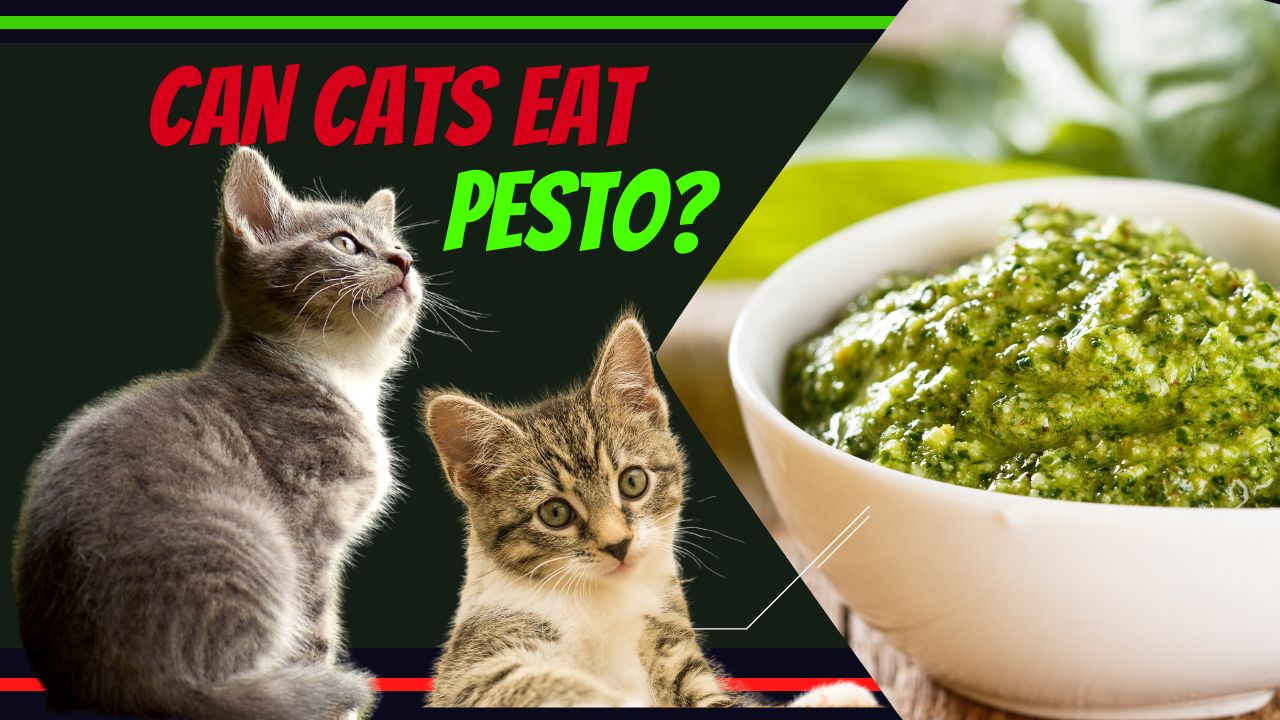
Can cats eat pesto? pesto may be delicious, but can cats eat it? Is it safe for them to consume? If you’re trying to figure out whether or not your cat will enjoy pesto, there are certain factors you should consider. After all, not all forms of pesto are created equal, and each can contain varying amounts of ingredients that are either toxic or indigestible to our feline friends. That said, with the right kind of pesto and some precautions on your part, your kitty might be able to give it a try!
Can Cats Eat Pesto? Everything You Need to Know
Pesto can be delicious when used on pasta, but it’s not something you should feed your cat. Pesto contains basil, pine nuts, and garlic, which are potentially toxic to cats if they overeat them, even in small amounts. Read this article to learn more about whether pesto is safe for cats to eat and what to do if your cat ingests any pesto accidentally.
What is Pesto?
Pesto is a sauce made from basil, pine nuts, Parmesan cheese, garlic, and olive oil. It’s often used on pasta or as a dipping sauce. While it’s not toxic to cats, you should know a few things before feeding it to your feline friend.
What’s in it?
Pesto is a sauce made from various ingredients, including basil, garlic, olive oil, Parmesan cheese, and pine nuts. While most of these ingredients are safe for cats, there are a few things to remember. For example, garlic can be toxic to cats in large quantities, so it’s essential to use pesto sparingly. Additionally, many commercially-made pestos contain onion or other ingredients that may not be suitable for your cat. So, if you’re wondering whether pesto is safe for cats, the answer is it depends. Consult with your veterinarian or make your pesto at home using cat-safe ingredients.
Questions to Ask Before Feeding Your Cat Pesto
Before you start feeding your cat pesto, there are a few questions you should ask yourself. First, is pesto safe for cats to eat? Second, will pesto provide any nutritional benefits for your cat? Third, how much pesto should you feed your cat? Fourth, what are the risks of feeding your cat pesto? Fifth, what are some other food options for your cat? Sixth, is there anything else you should know before providing your cat pesto? Finally, how can you do so safely and effectively if you decide to feed your cat pesto?
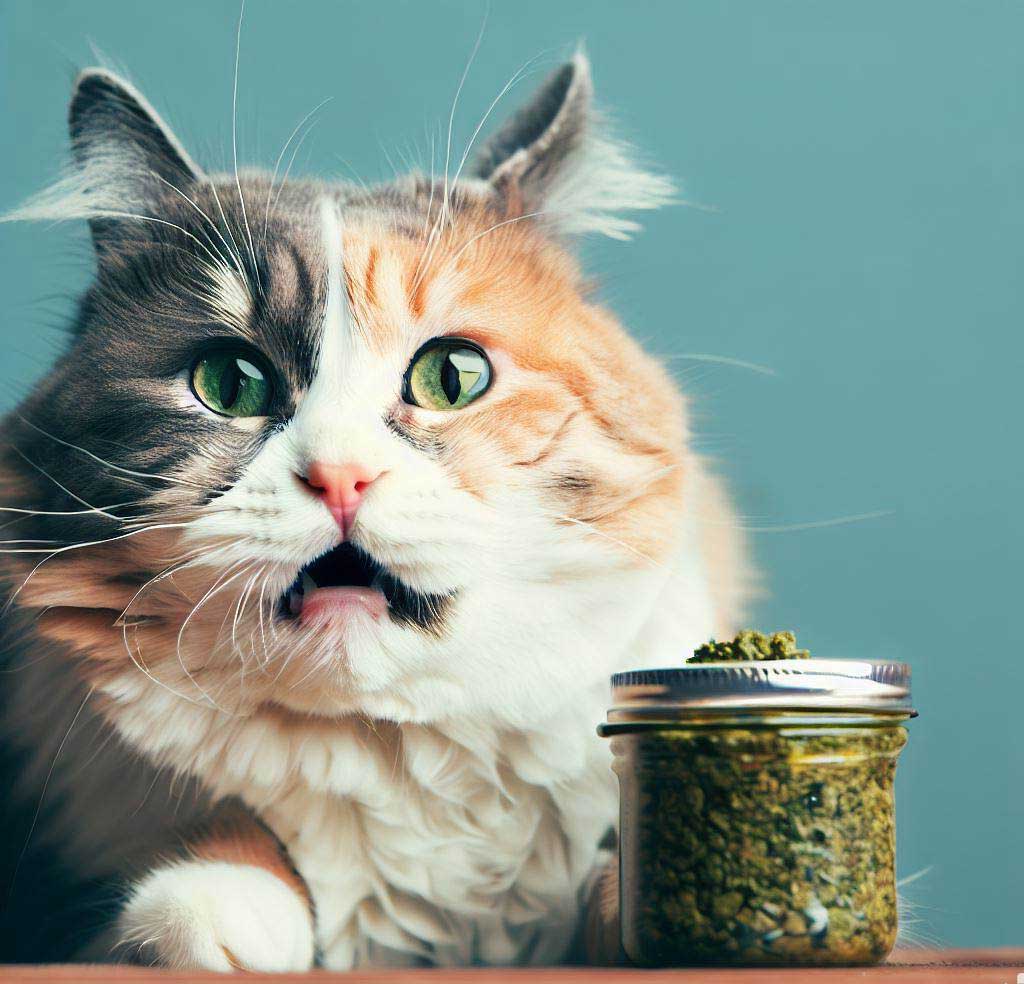
No, it’s not.
If you’re a cat owner, you might wonder if your feline friend can enjoy pesto. After all, it’s made from delicious ingredients like basil, olive oil, and Parmesan cheese. Unfortunately, the answer is no. Pesto is not safe for cats to eat.
Yes, but there are some things you should know first.
While cats are technically able to eat pesto, there are some things you should know before feeding it to your feline friend. First, pesto is made with garlic and onions, which can be toxic to cats in large quantities. So, if you give your cat pesto, ensure it’s in small amounts and only occasionally. Additionally, pesto is high in fat and calories, so it’s not the best food for cats who are overweight or have a heart condition. Lastly, some cats may be allergic to the ingredients in pesto, so it’s always best to check with your vet first.
Is it Safe for My Cat?
Whether or not pesto is safe for your cat depends on the ingredients. Most pestos contain large quantities of garlic, which can be toxic to cats. Other common elements, like Parmesan cheese and pine nuts, are generally safe for cats to eat. So, if you’re unsure whether your cat can eat pesto, it’s best to check with your veterinarian first.
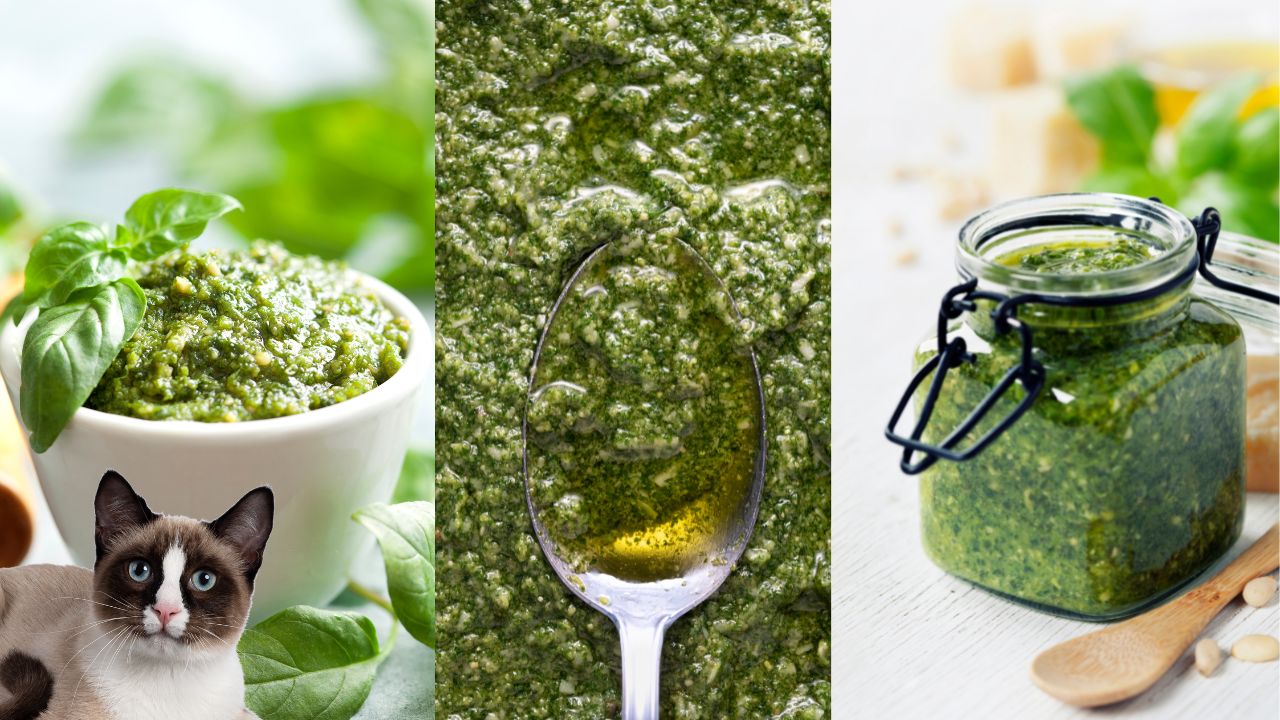
The Best Way to Feed Your Cat Pesto
Although many people believe that pesto is healthy for cats, the truth is that it can be pretty harmful. Pesto contains a lot of garlic and onion, which can cause gastrointestinal upset in cats. Additionally, the high-fat content in pesto can lead to pancreatitis. If you decide to feed your cat pesto, do so in moderation and as an occasional treat.
The Worst Way to Feed Your Cat Pesto
Giving your cat pesto straight from the jar is probably the worst way you could go about it. Not only is there a risk of them licking up too much oil, but they could also miss out on essential nutrients in other ingredients. Plus, most cats probably wouldn’t enjoy the taste of pesto all that much anyway. A better option would be to mix a small amount of pesto into their regular wet food or create a homemade version using cat-safe ingredients.
When should I not give it to my cat?
Most cats love the taste of pesto, but there are a few things you should keep in mind before giving it to your feline friend. Pesto is made with garlic, which can be toxic to cats in large quantities. Additionally, many pesto recipes call for pine nuts, which can also harm cats. If you decide to give your cat pesto, ensure it is in small amounts and watch them closely for any adverse reactions.
Reasons why your cat doesn’t love pesto
1. Pesto is full of intense flavors that can overwhelm a cat’s delicate palate.
2. The high level of garlic in pesto can harm cats.
3. The green leafy herbs in pesto, such as basil and parsley, can cause digestive upset in cats.
4. The olive oil in pesto can cause vomiting and diarrhea in cats.
5. Pesto is high in calories and fat, leading to weight gain in cats.
6. Some brands of pesto contain nuts, which can be dangerous for cats to eat.
7. Overall, it’s best to avoid feeding your cat pesto.
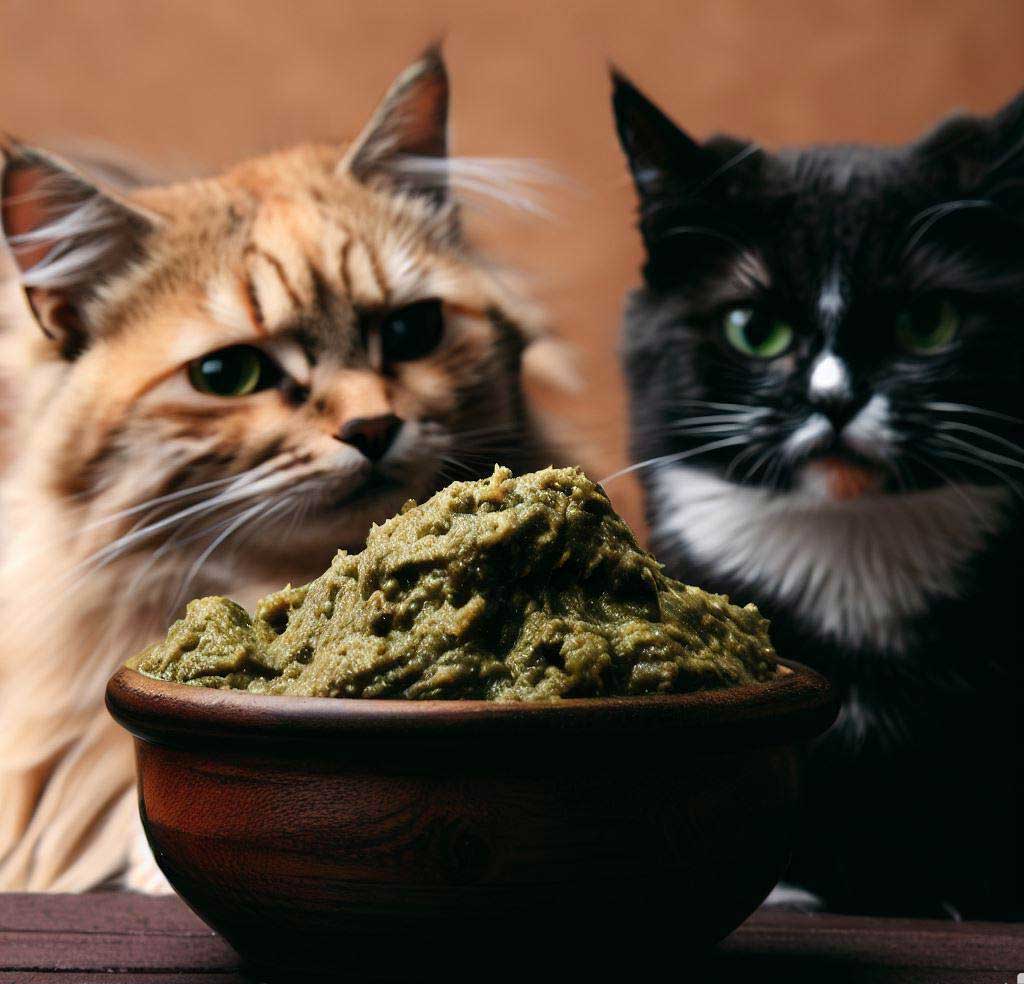
The healthiest kind of pesto
There are many types of pesto, but not all are healthy for cats. The most beneficial pesto is made with fresh ingredients like basil, parsley, and olive oil. Pesto can be a great source of nutrients for cats, but it’s essential to choose a recipe that doesn’t contain any garlic or onion, which can be harmful to cats. Avoid brands that use fillers like bread crumbs or processed cheese, as these can add unhealthy calories and fat. If you’re unsure whether a particular pesto is safe for your cat, always err on caution and consult your veterinarian first.
Tips For Getting Your Cat To Like the Taste of Pesto
1. Mix a small amount of pesto with your cat’s food. If they seem to like it, you can increase the amount you give them each time.
2. Some cats may not be immediately receptive to pesto taste. In this case, try mixing it with some of their favorite wet food or treats.
3. Always check the ingredients list on jarred pesto before giving it to your cat. Some brands may use ingredients harmful to cats, such as garlic or onion.
4. Pesto is high in fat and calories, so it should only be given to your cat in moderation. A tablespoon or two mixed into their regular food is usually sufficient.
What happens if your cat eats pesto anyway?
If your cat eats pesto, it may experience some gastrointestinal upset. The main concern would be if your cat ate a lot of pesto and started vomiting or had diarrhea. If this happens, you should take them to the vet to ensure they don’t become dehydrated. If your cat only ate a small amount of pesto, they should be fine, and you don’t need to worry.
Some Precautions and Warnings
While no known toxicities are associated with pesto, a few things to be aware of before feeding it to your cat. Pesto is high in fat and sodium, which can harm your cat if consumed in large quantities. It also contains garlic and onion, which can cause gastrointestinal upset—as with any new food, slowly introducing pesto to your cat is essential, and watch for any adverse reactions. If your cat experiences vomiting or diarrhea after eating pesto, discontinue feeding and contact your veterinarian.
What Happens If My Cat Eats Pesto and Gets Sick?
If your cat eats pesto and gets sick, you should take them to the vet first. If they are vomiting or have diarrhea, they may be dehydrated and need fluids. Pesto can also cause an upset stomach, so your cat may need medication to help them feel better. If your cat is having trouble breathing, it may have an allergy to pesto and require immediate medical attention.
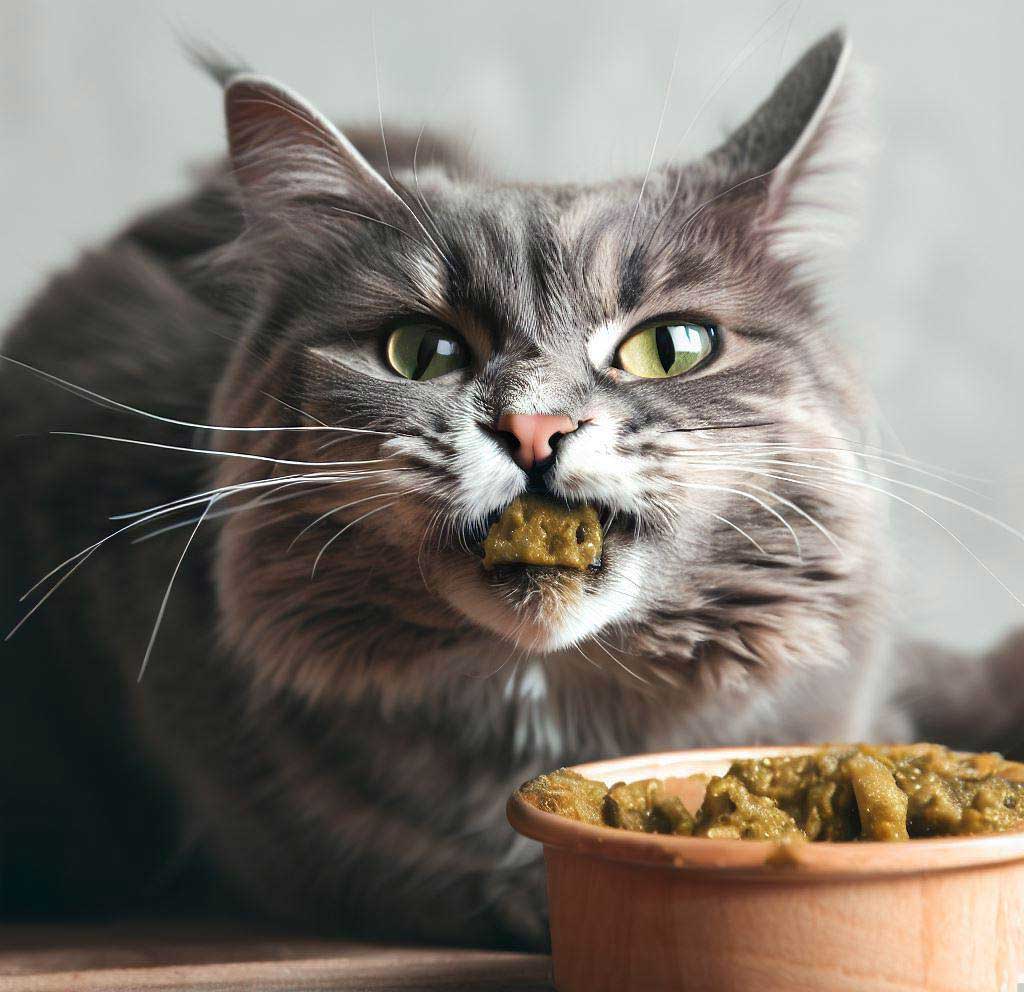
What Are the Risks of Cats Eating Pesto?
While most cats enjoy the taste of pesto, some risks are associated with eating it. The main risk is that pesto contains a lot of garlic and onions, which can be toxic to cats. Additionally, pesto is high in fat and calories, leading to weight gain and other health problems. Therefore, it’s essential to only give your cat a small amount of pesto as a treat and not make it a regular part of their diet.
conclusion
As it turns out, cats can eat pesto safely. However, there are a few things you should keep in mind. First, ensure the pesto does not contain any onions or garlic, as these can be toxic to cats. Second, only give your cat a small amount of pesto at first to see how they react. And finally, keep an eye on your cat for any signs of an allergic reaction, such as vomiting or diarrhea. If you notice these symptoms, stop feeding them pesto and contact your veterinarian immediately.

